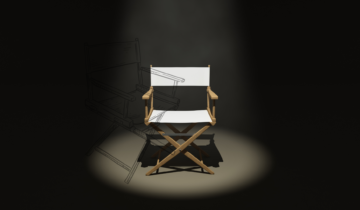Space exploration has always captured humanity’s imagination, driving innovation that reshapes our lives on Earth. NASA, with its relentless pursuit of pushing boundaries, has developed countless technologies and ideas that extend far beyond the stars. From sustainable living solutions to advanced material design, NASA’s work holds valuable lessons for industries like furniture design, interior aesthetics, and environmental responsibility.
Let’s dive into how NASA’s cutting edge advancements can inspire us to rethink design, sustainability, and functionality in our everyday environments.
1. Design Meets Functionality: The Balance of Form and Utility
Spacecraft design requires optimizing every inch of space to serve a purpose. NASA engineers ensure that tools, seating, and living quarters are compact, durable, and multifunctional. This principle aligns closely with modern design trends, where functionality meets style.

- Furniture Inspired by Space: Think modular furniture systems that adapt to small urban apartments, much like NASA’s compact yet versatile crew spaces. Pieces that fold, expand, or serve dual purposes echo the resourceful designs aboard spacecraft.
- Iconic Influence: Chairs like the Djinn Chair, featured in 2001: A Space Odyssey, demonstrate how futuristic aesthetics rooted in practicality can define an era.
2. Sustainability from Above: Closed-Loop Systems
In space, resources are finite. NASA’s development of closed loop systems for water recycling and waste management offers a blueprint for sustainable living on Earth. The agency’s focus on reusing materials and minimizing waste resonates with today’s eco-conscious consumers.
- Circular Design: Furniture and decor crafted from recycled or upcycled materials mirror this approach. Vintage and found objects your specialty beautifully capture the essence of giving materials a second life, much like NASA’s mission strategies.
- Green Innovation: Energy-efficient production methods inspired by NASA’s lightweight materials can make manufacturing more eco-friendly without compromising durability or design integrity.
3. Advanced Materials: Strength and Sustainability
NASA’s work with cutting edge materials, from heat resistant composites to lightweight alloys, opens possibilities for creating durable, stylish furniture.
- Applications for Furniture Design: Imagine chairs or tables made from aerospace grade materials, light, strong, and sustainable. Incorporating these innovations could revolutionize both aesthetics and functionality in space decor.
- Future Trends: Materials designed for extreme conditions can inspire outdoor furniture that withstands weather while maintaining sleek designs.
4. Space-Driven Inspiration: Aesthetic Minimalism
Spacecraft interiors prioritize minimalism not just for function but for mental clarity in confined environments. This aesthetic can inspire contemporary interiors, where clean lines and open spaces promote calmness and focus.
- Minimalist Furniture:Pieces like the Marcel Breuer Cesca Chair or the Barcelona Chair embody the principle of blending simplicity with luxury, creating timeless designs that complement any environment.


5. Lessons in Adaptability and Innovation
Perhaps the greatest takeaway from NASA’s achievements is the spirit of adaptability. In both space and design, the ability to rethink, repurpose, and innovate is crucial.
- Adapting Vintage for the Modern Era: Just as NASA retrofits old concepts with modern technology, we reimagine vintage furniture, giving it a new lease on life while preserving its historical significance.
- Inspiration for Storytelling: Every piece in our collection has a story, much like NASA’s missions. Sharing these narratives connects us with the unique legacy behind each design.
From Space to Your Space
NASA’s exploration of the unknown doesn’t just inspire scientific discovery it sparks creativity in design, sustainability, and storytelling. By incorporating these principles we can create spaces that are innovative, meaningful, and sustainable.
This reflection calls on designers, engineers, and innovators to consider the profound impact of intentional design. Whether in outer space or compact urban apartments, the principles outlined here are a reminder that good design improves not just our physical spaces but our quality of life. By applying these insights, we can create environments that are not only efficient and cost-effective but also inspiring and human-centered.





 No products in the cart.
No products in the cart.